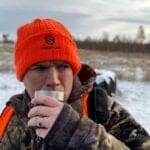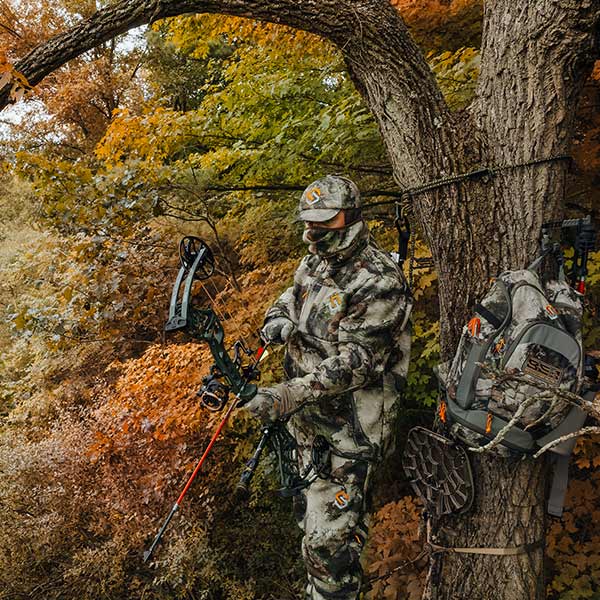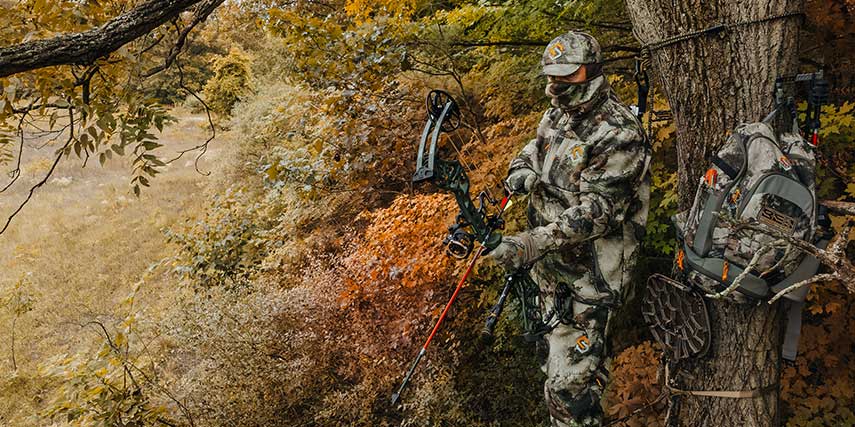
After quietly making our way through the darkness of the timber, a friend and I climbed into our stands for an early-October morning hunt. The stands were stacked above one another in the same tree, a setup we believed would be ideal for filming.
My friend had a bow in his hand. I had the camera on a swiveling arm, approximately three to four feet above him. The foliage was still green and provided thick cover. After a mere thirty minutes in the stand, we heard faint footfalls coming from the crunchy forest floor. A nice buck was making his way through the timber and was headed in our direction. We assumed he was heading back to a bedding area after feeding in a nearby field throughout the night.
As I filmed the buck slowly cruising through the timber, we kept ourselves concealed within the green foliage. The deer eased into archery range, my friend turned to me, and I gave the okay to take the shot. At twenty yards, I filmed the lighted nock zipping through the vitals of a nice Southern-Missouri early-season buck.
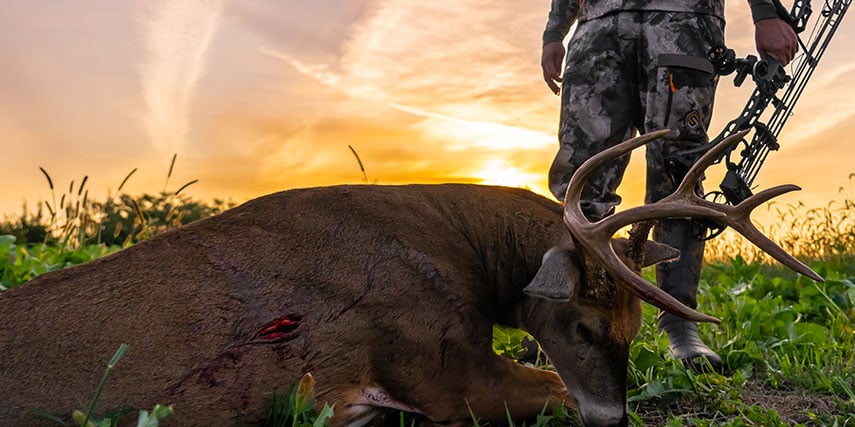
When and where to hunt during the early season is often debated. Some claim evening hunts are the only way to go. The thought is that traveling to the stand in the early mornings can often spook deer that hunters never even see. The location and placement of treestands, either in open fields or in foliage, is often met with much discussion as well. When hanging stands before the season, a hunter must determine the best entrance and exit routes. Once a proper access route has been established, it largely determines the best time of day to hunt that stand. At least it should.
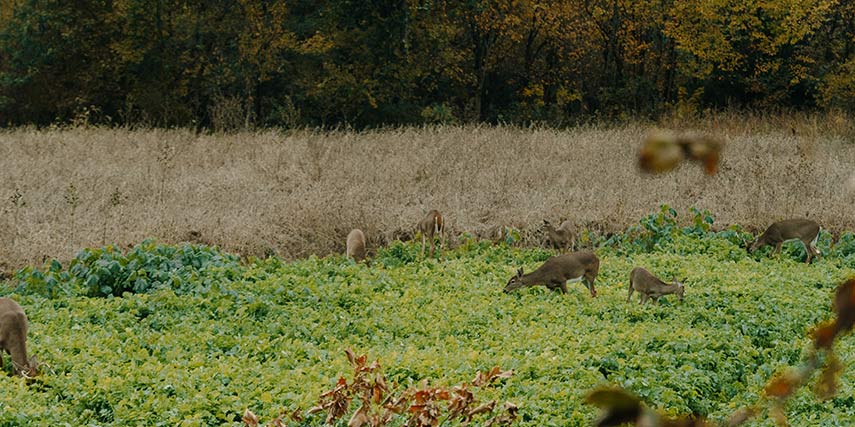
In September and the first two weeks of October, deer in most regions are still in a summer feeding pattern. A typical summer pattern for deer involves arriving at a food source in the late evenings, remaining in or close to the food throughout the night, and then returning to their bedding area sometime in the mid-morning when temperatures begin to warm. Often, hunters sit near food sources such as food plots or open fields during the early season. Evenings are often preferred because hunters can walk to their stand through open areas during mid-day before deer enter the food sources, then sit in stands that overlook the food to watch deer feed during the last couple of hours of daylight. Again, morning hunts are often rejected because hunters cannot get to their stand before daylight without spooking deer out of the food sources.
If a hunter can only sit in the mornings, there is at least one type of early-season stand site that can be effective—as it proved to be during my hunt with my good friend.
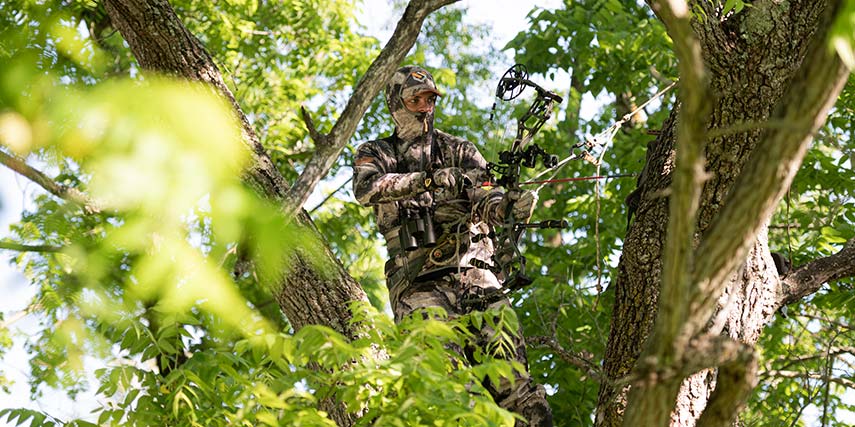
Sitting in the thick timber between food and the deer’s bedding area can be a very efficient morning setup during the early season. In our situation, our approach to the stand was on the opposite side and downwind of the food source. We were able to approach from the side, through the thick timber, which allowed a direct walk to our stand without getting near the food source or the bedding area. As the morning progressed, the buck left the food source as planned and headed to his bedding area for the rest of the day. We were in the perfect location to intercept him on his route.
Early-season whitetail hunting involves figuring out a deer’s travel patterns. Thankfully, those travel patterns are often highly predictable. During this time of year, a deer eats, sleeps, and drinks; that’s about it. To find the right stand location, the hunter should remember that they must try to catch deer coming and going when traveling for food. Hunting timber or open food sources depends on where deer travel and how hunters can approach those areas. Evening hunts should take place on major food sources. Morning hunts should take place in the timber between major feeding and bedding areas that the hunter can easily and safely access.
